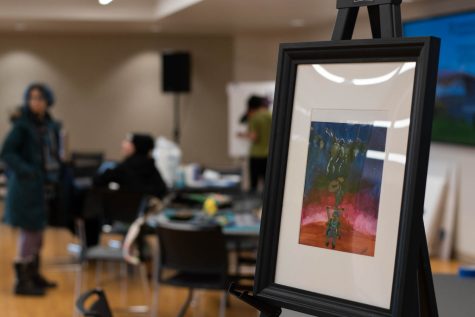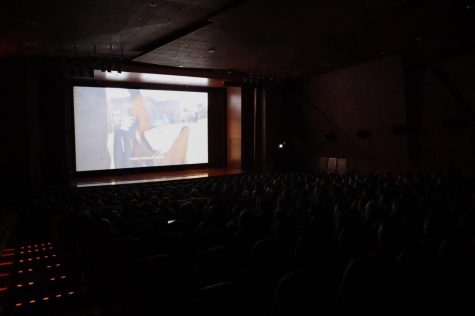Straight out of the universe this winter
January 30, 2015
An anonymous little door stands like a plain, ordinary classroom, but with a simple twist of the knob, the door opens and a circular structure of stars illuminates into a celestial horizon. It is here that the language of stars will be spoken.
Kaylan Petrie, education lead for WSU Planetarium, will lead viewers on an introduction tour of the winter night sky with the Planetarium’s “Spectacular Winter” tour.
The audiences will look up at the projection of the horizon and watch the sun fall for the night, she said. Petrie will point out the planets as well provide an interactive conversation about the wonders of the winter sky. In the Planetarium, people have the opportunity to see planets that one couldn’t spot in the sky on a regular basis.
“Anyone can be an observational astronomist,” Petrie said.
Petrie said her emphasis is to encourage anyone, despite experience or age, to come to this event, which takes place Friday at 7 p.m. and Sunday at 5 p.m.
The purpose is not to teach formulas and equations, but to prove that anyone can spot the planets, discuss the universe and learn how to decode stars on a map, she said.
Petrie will present the basic appearance of what the winter sky looks like and which types of sights are important to see.
She said she believes people enjoy the planetarium because it’s like going back in time, “When you’re looking in the sky you’re looking back in time. It’s like a time machine,” she said.
This Planetarium features a projected view of the night sky, elevated on a circular dome that fits 55 to 77 audience members.
Humans tend to associate beauty with the stars, said Michael Allen, senior instructor in the department of physics and astronomy.
People looking up at the night sky in the Planetarium interpret the stars by looking at the dots projected on the ceiling. Making up pictures with stars is simply just human nature, Allen said.
People are always curious with their relationship with the stars because it’s fun to be able to spot their zodiac sign, hidden somewhere in the universe, Allen said.
Department of physics and astronomy associate professor Guy Worthey said humans are connected to the universe. While the Planetarium helps teach basic astronomy, the events bring in elements of astrology as well.
Astrology is a “pseudo-science that supposes the stars control humans’ lives,” Worthey said.
People come to the planetarium because they feel connected or want to feel a connection to the universe, he said. Observing the stars can give people a sense of recollection and familiarity, especially when they come across stars designed by their various zodiac signs.
People are also genuinely interested in learning about the stars because stars are universal in the sense that as long as it’s dark, they can be spotted anywhere on Earth, Allen said.
There is an essence that the universe is very quiet and very dark and that we are constantly in motion, but the stars never change position, he said.
“There is a kind of romance and power with humans and the stars because we are made of the same stuff,” he said. “We share our very selves with the whole solar system.”
The Planetarium can be very romantic for stargazing couples, he said, and it will host romantic-themed shows in February for Valentine’s Day. The features around Valentine’s Day involve myths about the night that are somewhat bizarre and romantic, he said.
But for now “Spectacular Winter” will show the winter sky at 7 p.m. tonight and at 5 p.m. Sunday in Sloan Hall. Admission is $5.
“People love to be connected to the cosmos,” Worthey said.


















